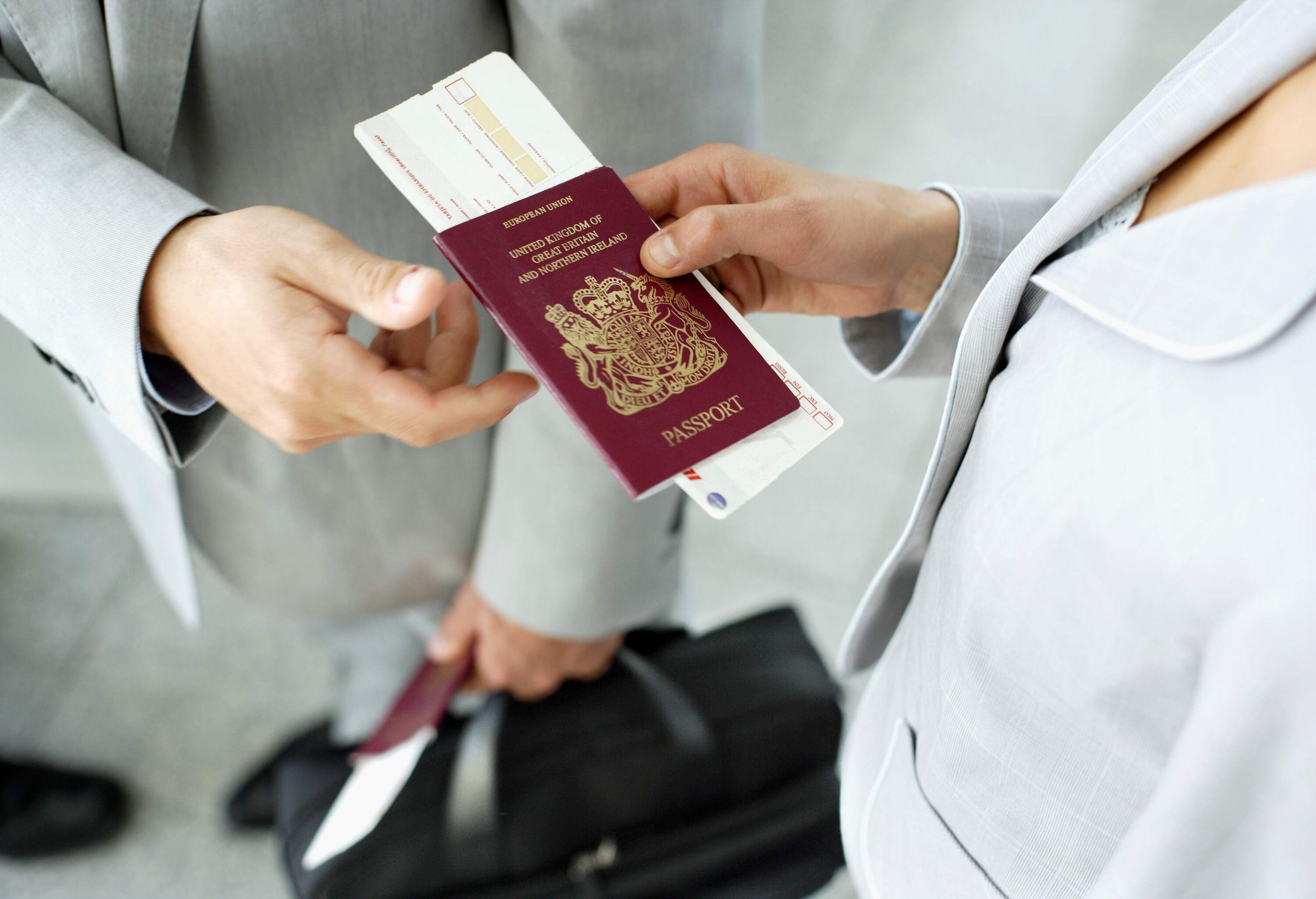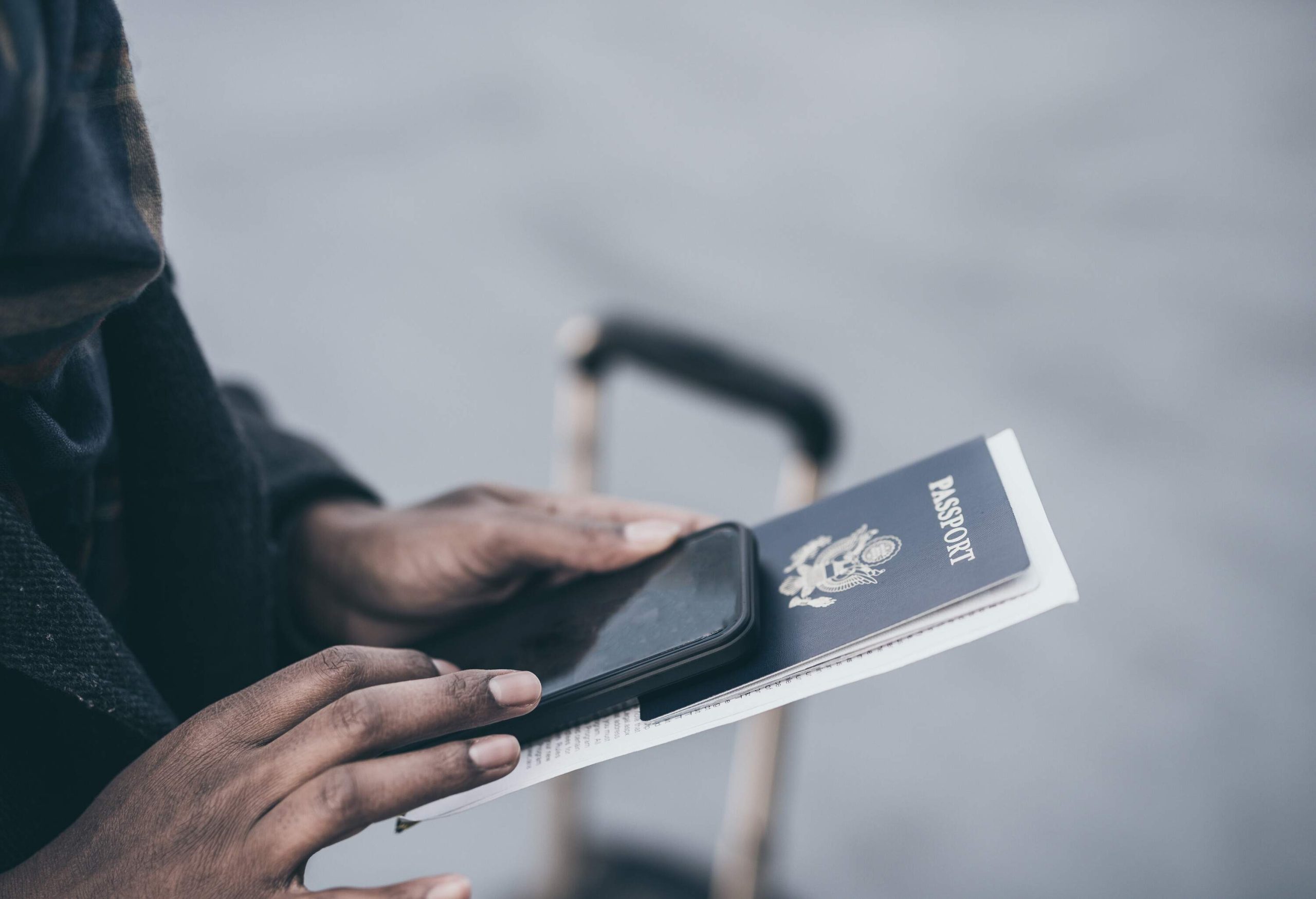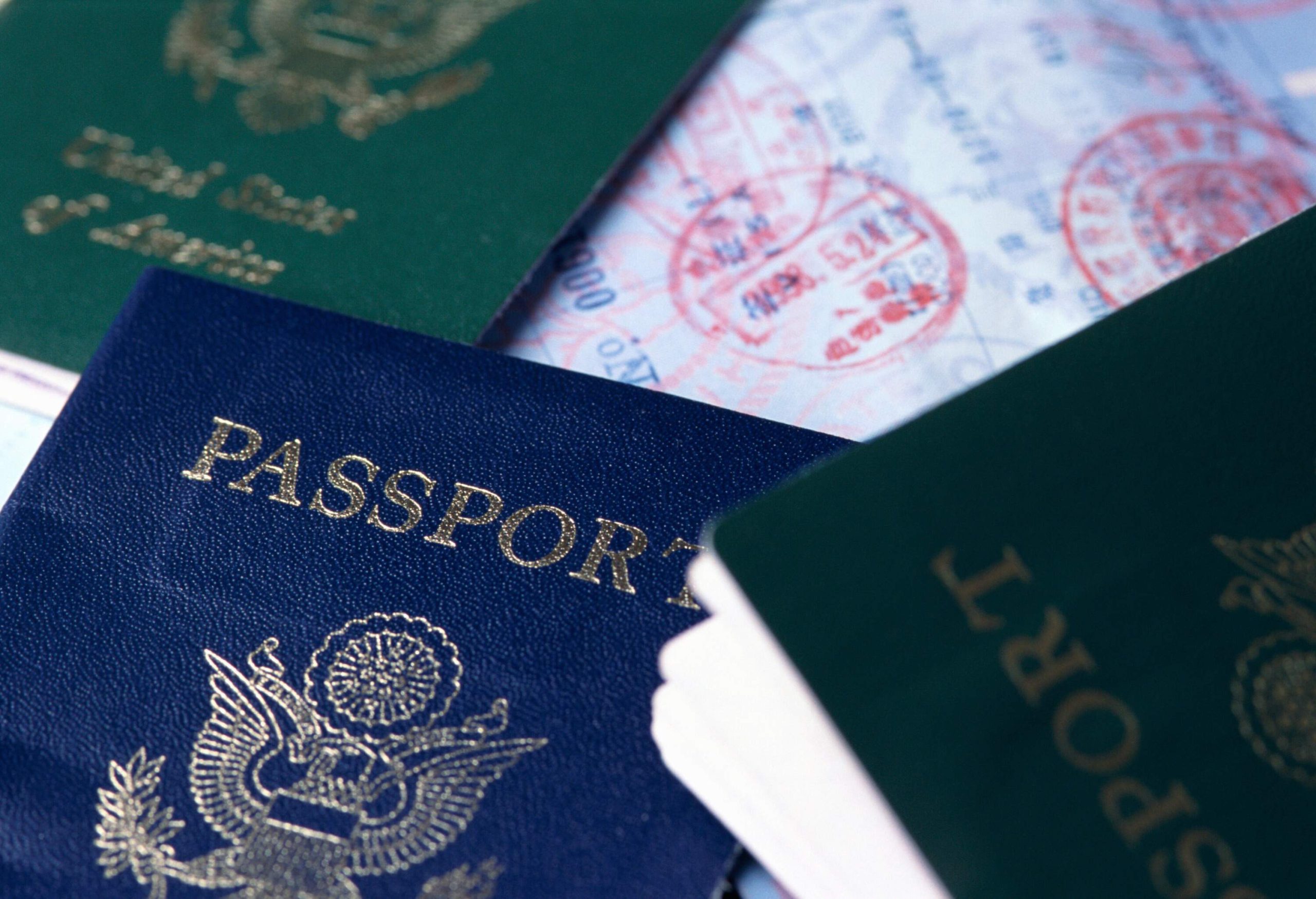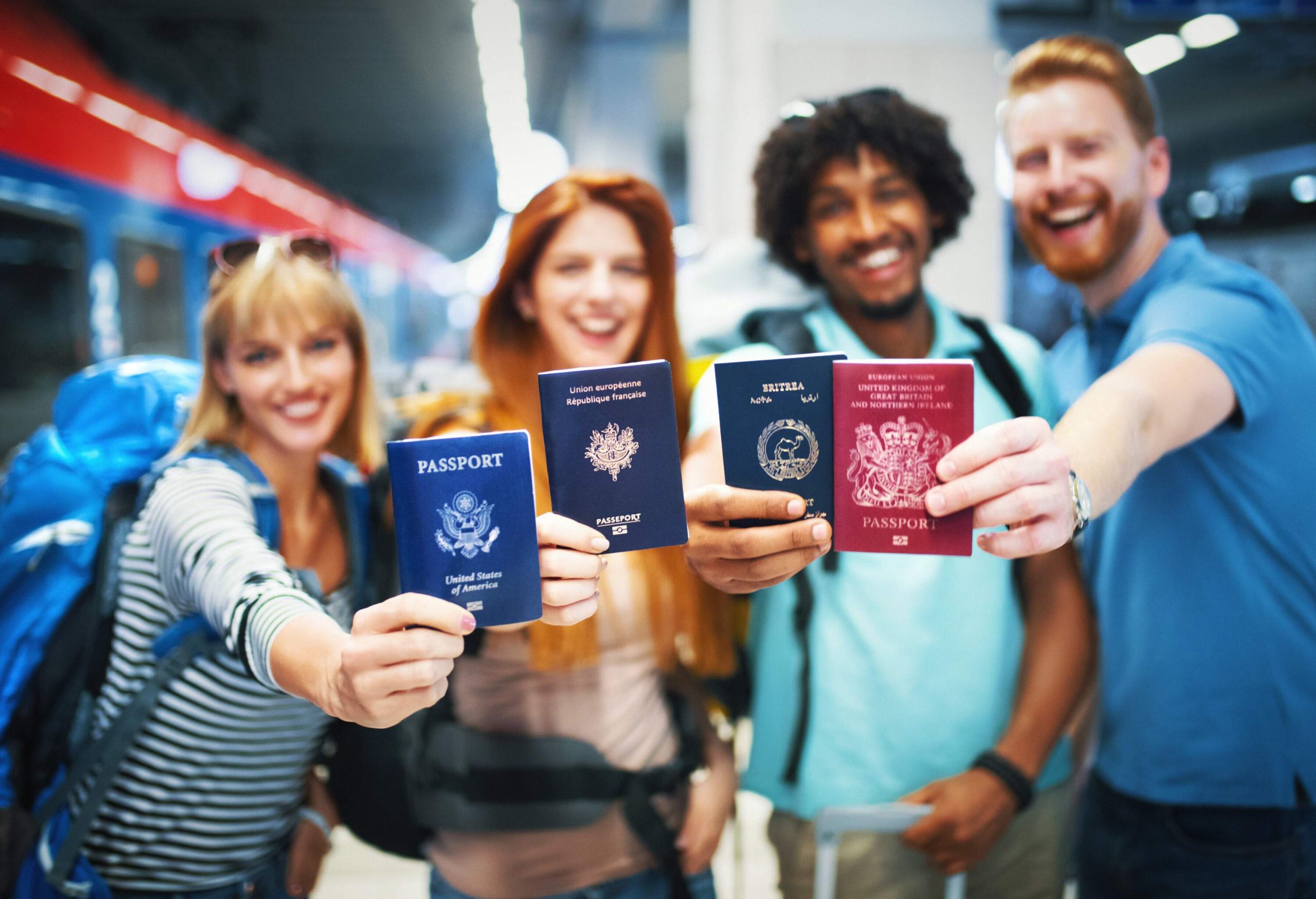Each country is free to decide its own passport color, but the colors they choose often have economic, cultural, political, or even religious significance. So what do the different colors mean? And can there be different colors within one country? To answer these questions, let’s explore passport colors by country.
What are the different passport colors and their meanings?
There are four different passport colors: blue, red/burgundy, green, and black. But what do they mean? Let’s cover each one in detail.
US citizens have blue passports, along with citizens of several other countries.
A blue passport typically represents the “new world” but it can also be an indication of the economic union that a specific country is a part of. Most of South America, the Caribbean countries, and U.S. territories have blue passports. Although, several countries that are not part of the “new world” have blue passports, such as a few in Africa and Asia.
A red/burgundy passport is also typically an indication of the country’s economic union status. For example, all EU countries have burgundy passports, and the UK changed its passport from burgundy to blue when it withdrew from the EU.
Switzerland also has a red passport, which matches their flag, and Turkey, an EU hopeful, has switched to red.
Green is an important color in the Islamic faith and is therefore used as the passport color for many Islamic countries. This includes places like Saudi Arabia, Egypt, Pakistan, and Morocco, as well as many African countries.
Mexico, Vatican City, and Taiwan also use green passports for non-religious reasons.
This is the rarest passport color. Seen as the most practical color, it provides a nice contrast with the countries’ crests and also hides dirt well.
Countries using black passports include Angola, Malawi, Trinidad & Tobago, and Tajikistan. New Zealand also uses a black passport, as black is their national color.
How many passports for each color?
BLUE
84 passports, including Afghanistan, Honduras, Australia, Iceland, Laos…
RED
68 passports, including Albania, Bolivia, France, Cambodia, Philippines, Qatar…
GREEN
40 passports, including Algeria, Vatican City, Saudi Arabia, Burkina Faso, Mali…
BLACK
7 passports, including New Zealand, Trinidad and Tobago, Angola, Congo…
Why are there different U.S. passport colors?
There can even be different colors of passports within one country. U.S. passport colors can be black, maroon, gray, or blue. Most U.S. citizens have blue passports, while the other colors are issued to government employees. So what do these special U.S. passport colors represent?
The diplomat: Black U.S. passport
Black passports are issued only to Foreign Service Officers, or, in other words, diplomats. For example, the President of the United States and his immediate family have black passports.
The maroon passport is issued to other employees or officials of the government, as well as active-duty members of the military traveling abroad. People holding these passports also include FBI agents and bureaucrats.
Gray passports are issued to third-party contractors traveling to support the government. These are also known as service passports.
The classic: Blue U.S. passport
Regular U.S. citizens have blue passports. To be clear, people who have other U.S. passport colors also have blue passports, as the other colors are not valid for leisure travel.
There’s also a no-fee version of the blue passport provided to members of the American Red Cross, the Peace Corps, and the Department of Defense.
The main difference between the regular passports and all special-issue passports is that the special-issue passports don’t require a fee and are only valid for five years.
The Evolution of the U.S. Passport
Green
The League of Nations standardized passport requirements, and the U.S. followed suit. The U.S. passport evolved into a small green booklet.
Blue
The passport became patriotically blue to celebrate the U.S. Bicentennial.
Green
In 1993, the green cover returned to celebrate the bicentennial of the U.S. Consular Service. This, however, was a short-lived change.
Blue
In 1994, the passport color was changed back to blue and has remained so ever since. It is believed that this blue matches that of the American flag.$
What will passports look like in the future?
The evolution of the passport is ongoing and will change as the world itself continues to change. As we move further into the digital age, we may find that passports in the future could also be digitized. Our physical passports already carry biometric information, and it remains to be seen how the development of new technology will affect passports in the future.
Conclusion
Now that you know what the different passport colors mean, it’s time to use yours for some international travel! Before booking, don’t forget to check out the guides about how to check your passport status, and if you’re about to travel you can read our guides about finding cheap flights and surviving long flights.
The foregoing article was last updated on the 29th of August 2024. It does not contain legal advice and is for informational purposes only. KAYAK does not guarantee, and accepts no legal liability arising from or connected to, the accuracy, reliability, currency or completeness of any of the information contained in this article and/or any of the content linked to within it. Always check the official government website of your departure and arrival destinations prior to travel for up-to-date information.
Sources:
https://www.passportindex.org/byColor.php
https://www.gov.uk/government/publications/types-of-british-passports/types-of-british-passports-accessible
https://www.passportindex.org/byRegion.php
https://py.usembassy.gov/wp-content/uploads/sites/274/2017/05/CAHeader-TYPES-OF-PASSPORTS-Nov-22-2016.pdf
E-book “The United States Passport: Past, Present, Future, Issue 153. Passport Office, Department of State, 1976 – Government publications (https://books.google.pt/books/about/The_United_States_Passport.html?id=YtaPAAAAMAAJ&redir_esc=y)
https://www.us-passport-service-guide.com/next-generation-passport.html




